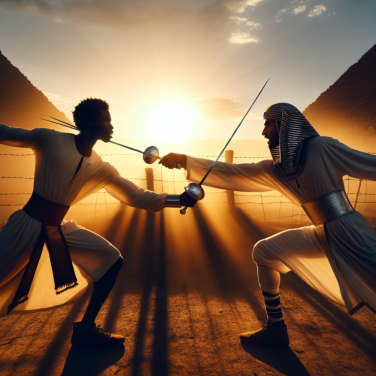Traversing Tradition and Innovation in Elephant Polo: Sporting Events and Cultural Significance
Elephant polo, a game that might sound fictional to the uninitiated, is indeed a rare spectacle in the realm of sports. It's a variant of the traditional horse polo, adapted to be played on elephants instead. The game usually involves teams mounted on these majestic creatures, using long-handled mallets to drive a ball towards opposing goals. Despite its smaller sphere of influence compared to more mainstream sports, elephant polo has garnered a dedicated following, fusing the grandeur of tradition with the innovative spirit of contemporary sporting events.
Delving deeper into this unconventional sport, one finds that the combination of tradition and innovation is not just incidental but fundamentally woven into its ethos. Elephant polo has its roots in Nepal, where it was first played in the 1980s. It was introduced by two former Olympic bobsledders, James Manclark from Scotland and Jim Edwards from Nepal. The duo sought to create something novel yet respectful of the cultural importance of elephants in Asia, and in doing so, they established an event that captivated the imagination of locals and tourists alike.
The cultural significance of elephants in countries like Nepal, India, and Thailand, where elephant polo has been most popular, cannot be overstressed. These animals have been revered for centuries, depicted as symbols of might, intelligence, and royal power. Their presence in polo, therefore, is not merely an exotic twist on an established sport; it is a celebration of their storied place within these societies. Tournaments often commence with grand parades and ceremonies that highlight the veneration of these creatures, ensuring that the sport retains a strong cultural dimension.
However, innovation within elephant polo has not always been devoid of controversy. In recent years, there has been growing concern over the welfare of the elephants involved in these tournaments. Animal rights organizations have criticized the sport, pointing out the stress and potential harm inflicted on the elephants through rigorous training schedules and the actual games. In response, advocates for the sport have instituted changes to ensure the well-being of the participating elephants, such as shorter playing times, ample rest periods, strict veterinary oversight, and the prohibition of sharp tools or hooks that could injure the animals. These measures demonstrate a responsible approach to marrying tradition with modern sensibilities regarding animal welfare.
Moreover, innovation within the sport has also taken the form of diversifying its social impact. Several elephant polo tournaments serve as fundraisers for elephant conservation projects and local communities.
Read also:
Mastering the Game: A Comprehensive Guide to Squash
The Intricacies of Elephant Polo: A Guide to the Sport's Unique Gameplay
Elephant polo, an unusual variant of the traditional horse polo, is a sport that captures the imagination with its blend of cultural heritage and athletic challenge. The game is played much like its equestrian counterpart; however, there are some distinctive characteristics that set it apart, necessitating a unique approach to gameplay and strategy.
**Elephants As Athletes**
In contrast to the agile horses used in traditional polo, elephants are slower and less maneuverable. This demands a strategic shift from speed and agility to a more deliberate and carefully orchestrated positioning of the players. Each elephant is typically guided by a mahout, who steers the animal, while the player focuses on the ball. The deep bond between the mahout and their elephant is essential, as good communication can give a team a significant competitive edge.
**The Mallets and Balls**
Given the larger playing field and the height from which players must strike, the mallets used in elephant polo are longer than those in traditional polo, often reaching up to eight or nine feet in length. The ball, too, is typically larger and made of a more robust material to withstand the powerful hits it may receive during the course of a game.
**Rules and Regulations**
Elephant polo rules are adapted to ensure the safety and well-being of the elephants. Sudden starts and stops are avoided, and there is a limitation on the amount of time an elephant can play to prevent overexertion. Protective gear is also common, both for the animals and the players.
**Field of Play**
The size of the polo field is adjusted to account for the elephants’ slower pace, often being half the size of a traditional polo field. The smaller field compensates for the elephants' limited speed and makes the game more visually entertaining for spectators.
**Gameplay Dynamics**
In terms of the gameplay itself, teams are smaller, typically comprising four elephants on each side. The actual gameplay involves a similar objective to horse polo, where teams vie to score goals by driving a ball into the opposing team's goal using their mallets. But due to the sheer size and momentum of an elephant, turning around and changing direction can be slow, making positioning and anticipation crucial elements of strategy.
**Player Roles and Responsibilities**
The players atop the elephants have defined roles, much like in any team sport. There are offensive positions focused on scoring and defense-oriented roles dedicated to preventing the other team from advancing.




